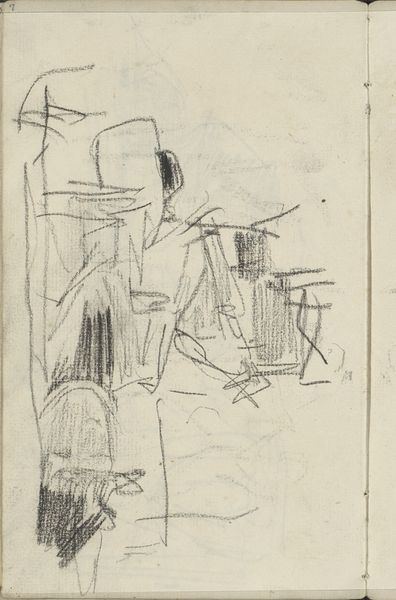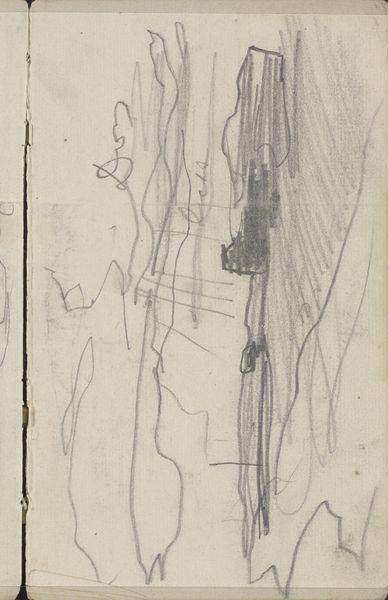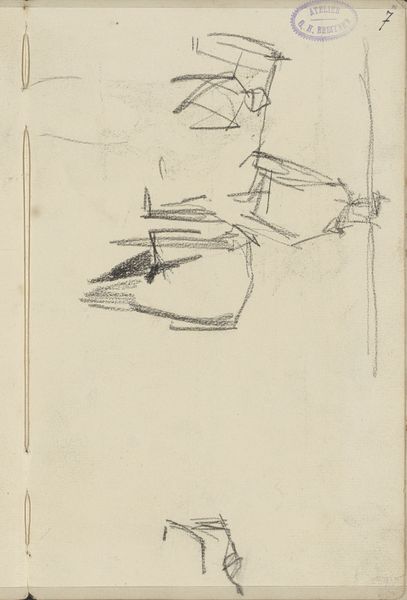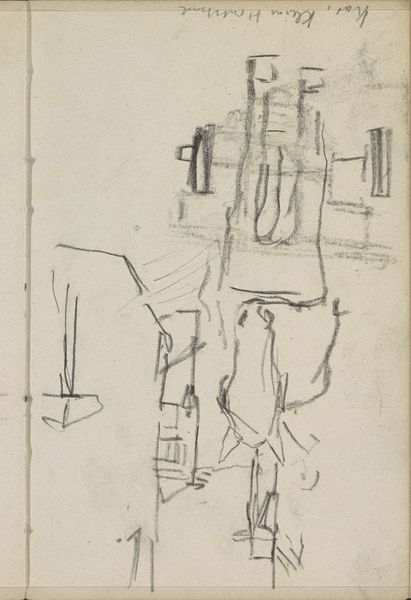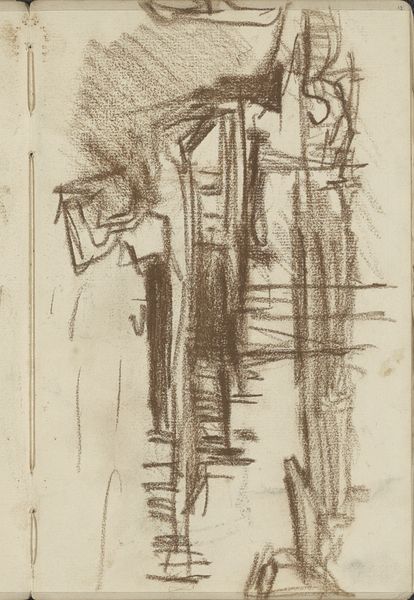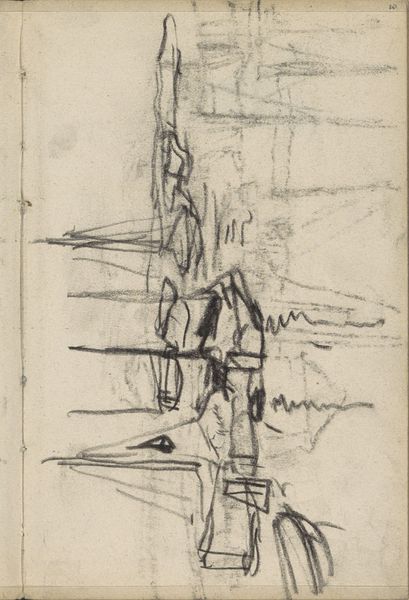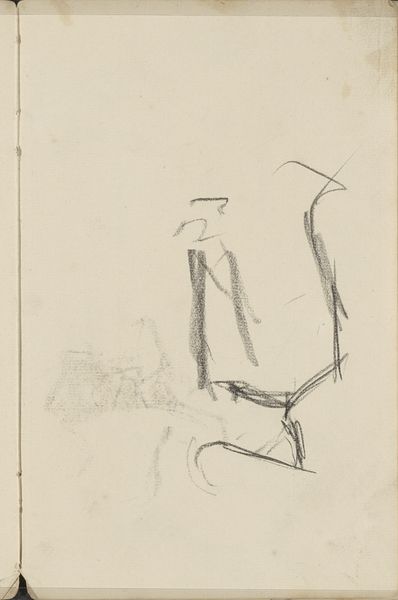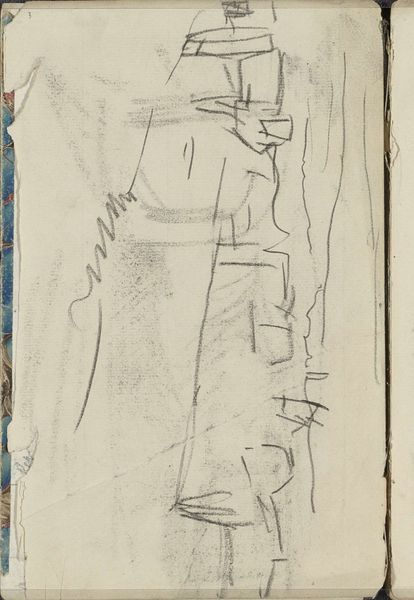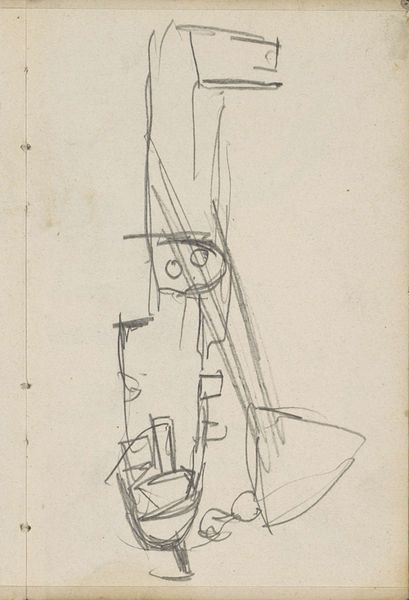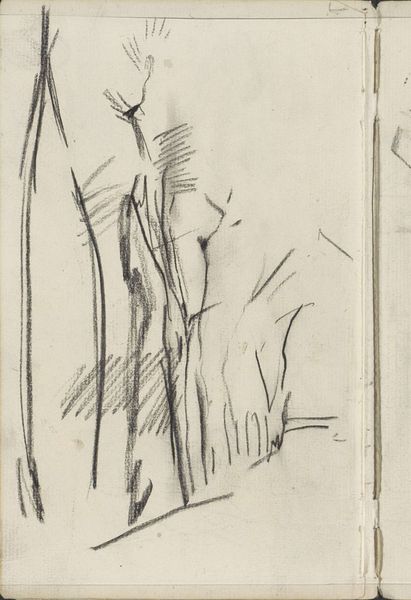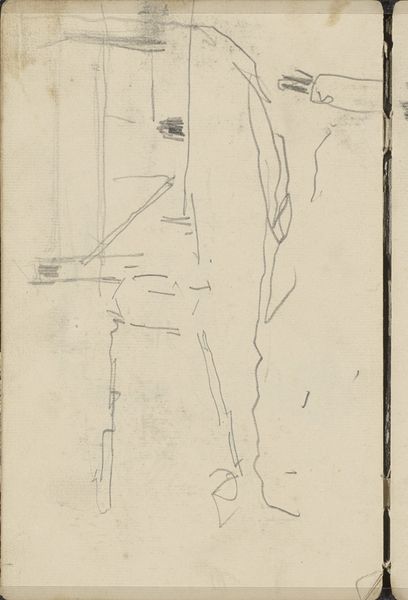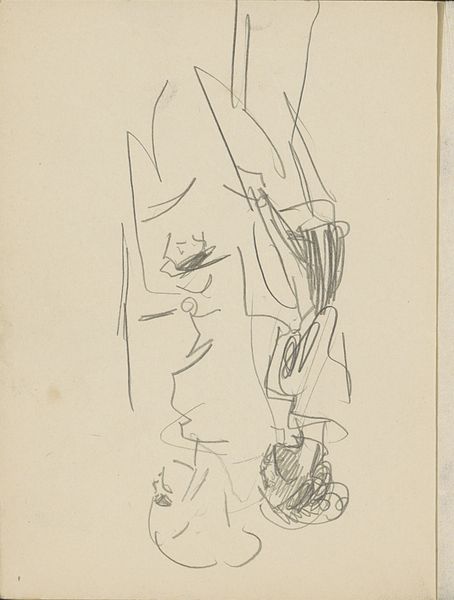
drawing, pencil
#
drawing
#
quirky sketch
#
impressionism
#
landscape
#
personal sketchbook
#
idea generation sketch
#
sketchwork
#
ink drawing experimentation
#
sketch
#
pen-ink sketch
#
pencil
#
line
#
sketchbook drawing
#
storyboard and sketchbook work
#
sketchbook art
#
initial sketch
Copyright: Rijks Museum: Open Domain
Curator: We're looking at "Schuit," a drawing by George Hendrik Breitner, dating from 1887 to 1889. It's housed here at the Rijksmuseum. Editor: There’s something immediately appealing in its rawness. It feels like catching a fleeting thought. Just graphite and paper conveying an idea not yet fully formed, or maybe intentionally left unresolved. Curator: Breitner, deeply influenced by Impressionism, was fascinated by capturing fleeting moments in the daily lives of the working class and the urban experience in Amsterdam. Consider this a window into his process—this work allows a peek into how he documented the world around him and laid the groundwork for larger, more finished paintings. Editor: Precisely! I see the process of observation and record, but my mind also goes to the tangible qualities of the paper and the pencil. Where was this paper made? What kind of graphite was used and by whom? Understanding the historical extraction, production, and consumption related to such basic tools helps understand Breitner’s time, doesn't it? Curator: It absolutely provides crucial context. Breitner's urban scenes, although seemingly straightforward, must be considered within the frame of rapid industrialization, shifts in class structure, and all sorts of tensions surfacing at the time. This image depicts not just a boat, but possibly, the very networks that moved materials throughout the city as well. Editor: It speaks of labor. Boats, or “schuit”, facilitated Amsterdam’s booming trade in those times, a network driven by raw human labor. We see a boat but really are reminded of countless individuals and their activities required for such system of exchange. Curator: True, and I think the quick, almost urgent lines, underscore that sense of constant movement, constant labor, but also consider this urgency an invitation to analyze from whose perspective is this activity being seen from. This is hardly a neutral observation of a vessel—more likely an insight into an industrial element affecting the landscape. Editor: A drawing becomes then not simply a representation of something observed, but evidence of human transformation, economic and social realities and production happening on the ground. Curator: Yes, and seeing art in the round enriches our comprehension. Editor: It does, and it prompts a richer, and arguably a much more equitable engagement with art history itself.
Comments
No comments
Be the first to comment and join the conversation on the ultimate creative platform.

